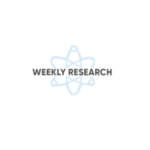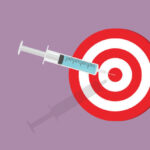The significance of telehealth for women’s health is gaining momentum, and managing blood pressure with remote monitoring has emerged as a key tool in taking charge of women’s health. National Women’s Health Week is celebrated annually. This year, May 12 – 18, 2024, is women’s health awareness week, which educates and encourages women to prioritize their health and well-being.
May 18, 2024, is dedicated to women and heart health. This article focuses on home blood pressure monitoring as a preventive tool for managing women’s heart health, a critical aspect of women’s health.
High Blood Pressure in Women’s Health
Heart disease is the leading cause of death for women, yet only around half of women in the U.S. recognize this fact. Heart health is a critical concern for women of all ages and backgrounds, with varying risks based on factors like race and ethnicity. Women of color, particularly Black women, face higher risks of heart disease compared to White women, and Hispanic women often experience heart-related problems earlier in life.
Women’s heart health needs differ from men’s, and they are influenced by factors such as pregnancy, stress, and hormonal changes over time. These unique elements play significant roles in a woman’s overall heart health.
High blood pressure, or hypertension, commonly affects millions worldwide. It occurs when the force of blood against the walls of the arteries is consistently too high, which can lead to serious health problems such as heart disease, stroke, and kidney failure. Unfortunately, many people with high blood pressure are unaware of their condition because it often has no symptoms.
That’s why National Women’s Health Week is so important. It’s a time to raise awareness about the importance of regular check-ups, monitoring blood pressure, and taking steps to lower it if it’s too high. Telehealth for women’s health and blood pressure remote monitoring are two valuable tools that make it easier for women to manage hypertension. They are especially for women who may have difficulty making it to regular doctor’s appointments.
Telehealth for Women’s Health and Blood Pressure Remote Monitoring
Telehealth for women’s health appointments combined with blood pressure remote monitoring makes it easier for women to manage and track hypertension. It allows individuals to take their blood pressure from their homes using a remote patient monitoring (RPM) monitor. These FDA-cleared RPM devices are easy to use and can provide accurate readings in just a few minutes. Their blood pressure readings are immediately sent to their physician via a secure online platform. This allows doctors to monitor patients’ blood pressure levels and adjust their treatment plans as needed.
Research on Blood Pressure Remote Monitoring
A study conducted at Brigham and Women’s Hospital demonstrated the effectiveness of blood pressure remote monitoring in managing blood pressure. In addition, the study explored the potential of remote blood pressure monitoring for hypertension management. In the pilot study, 130 patients with uncontrolled blood pressure were enrolled. These patients were equipped with a Bluetooth-enabled blood pressure device and instructed to measure their blood pressure twice daily. Real-time readings were transmitted to patient navigators through a dashboard, allowing them to monitor and manage the patient’s condition daily.
The patient navigators played a crucial role in the study, educating patients on lifestyle modifications and offering motivation to facilitate necessary behavioral changes. They also received a treatment algorithm developed by hypertension specialists at the hospital based on established protocols.
The researchers reported that the pilot study achieved an overall blood pressure control rate of 81% among the participating patients. This indicates that the remote monitoring approach was highly influential in managing hypertension.
Benefits of Home Blood Pressure Remote Monitoring in Women’s Health
Telehealth for women’s health includes home blood pressure remote monitoring. For example, home blood pressure monitoring can be especially beneficial for pregnant patients with obstetric hypertension. High blood pressure is a common pregnancy complication, and it can be dangerous for both the mother and baby if left untreated. By monitoring their blood pressure at home, pregnant women can catch any spikes in their blood pressure early and seek medical attention if necessary.
One recent study concludes that RPM for managing diabetes in pregnancy is superior to traditional paper-based methods and associated with improved maternal and neonatal outcomes. The study found that remote pregnancy monitoring patients had better results, achieving glycemic control in the preferred target range more quickly and with fewer complications, including lower preeclampsia and neonatal hypoglycemia rates.
Another benefit of blood pressure remote monitoring is that it can help women stay on top of their health even when busy. So many women juggle work, family, and other responsibilities, and finding time for regular doctor’s appointments is challenging. Telehealth, for women’s health, can empower women to take control of their health and manage their condition on their schedule.
Tenovi RPM Blood Pressure Monitor
Patients should choose blood pressure remote monitoring devices that are easy to use and comfortable at home. Tenovi’s BPM device, for example, eliminates the hassle of complicated setup and is user-friendly.
The Tenovi RPM blood pressure monitor is a Bluetooth device that transmits vital patient sign-monitoring data through the Tenovi Cellular Gateway using the same cellular network as our mobile phones. Bluetooth devices with a cellular Gateway can connect many remote patient monitoring devices simultaneously. For example, preprogrammed wireless blood pressure monitors, scales, blood glucose meters, and pulse oximeters can connect to the Tenovi Gateway.
To measure blood pressure, the patient wraps the cuff around their upper arm, presses the middle button, and inflates the cuff to take the reading. The device then sends the data to the remote patient monitoring platform.
A blood pressure reading above 130/80 mm Hg is considered hypertensive and increases the risk of stroke. Therefore, a physician or qualified medical professional can set a threshold to receive real-time alerts if a patient’s blood pressure reading is too high. Healthcare professionals can also use RPM to monitor blood pressure reading trends and observe how patients respond to medications.
Telehealth for Women’s Health Key Points
In conclusion, National Women’s Health Week is a necessary time to focus on women’s health and well-being. Managing high blood pressure is crucial to women’s health, and blood pressure remote monitoring can be valuable. This technology allows women to monitor their blood pressure levels and stay on top of their health, no matter how busy their lives are. Schedule a free demo with Tenovi to learn more about our remote patient monitoring solutions.






